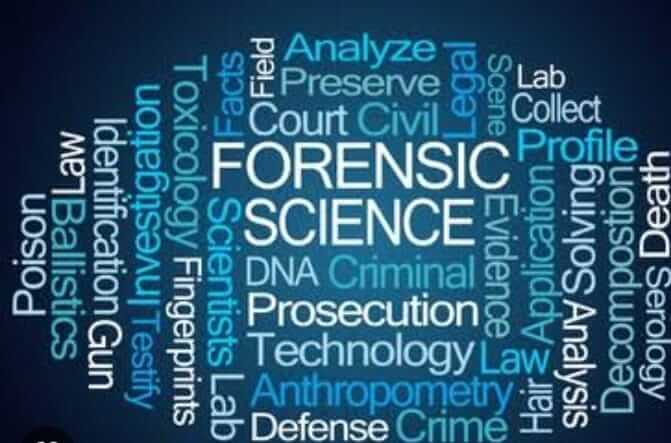Forensics Online Course
Pak Chronicle Web Desk
Forensics Online Course plays a pivotal role in criminal investigation in the modern era and there are a number of online courses available for learning about forensics, some of which are free and others that require payment. Here are a few options:
Introduction to Forensic Science – This is a free cthe ourse offered by the University of Strathclyde through the FutureLearn platform. The course covers the basics of forensic science, including crime scene investigation, DNA analysis, and forensic pathology.
Forensic Science and Criminal Justice – This is a free course offered by the University of Leicester through the FutureLearn platform. The course covers various aspects of forensic science, including fingerprint analysis, blood pattern analysis, and digital forensics.
Forensic Science: Fundamentals & Investigations – This is a paid course offered by the International Association for Continuing Education and Training (IACET). The course covers the basics of forensic science, including crime scene investigation, DNA analysis, and forensic toxicology.
Forensic Science and Profiling – This is a paid course offered by Udemy. The course covers the basics of forensic science, including crime scene investigation, blood spatter analysis, and forensic psychology.
Forensic Science: From Crime Scene to Courtroom – This is a paid course offered by the University of California, Davis through the Coursera platform. The course covers various aspects of forensic science, including crime scene investigation, forensic anthropology, and forensic toxicology.
These are just a few examples of the many online courses available for learning about forensics. It’s important to do your own research and choose a course that aligns with your interests and career goals.
What is Forensics Science?
Forensics, or forensic science, refers to the application of scientific principles and techniques to solve legal and criminal cases. It involves the collection, analysis, and interpretation of physical evidence, such as DNA samples, fingerprints, and trace materials, to provide objective and reliable information that can be used in courts of law. Forensic science is a multidisciplinary field that draws on expertise from various scientific disciplines, such as biology, chemistry, physics, and computer science, to investigate crimes, accidents, and other legal matters. The goal of forensics is to provide impartial and accurate information to help identify perpetrators, exonerate innocent individuals, and support justice and the rule of law.
How Forensics Science Works
Forensic science is the application of scientific principles and techniques to the investigation of crimes and other legal disputes. The main purpose of forensic science is to provide objective and scientifically reliable evidence that can be used in court to support or refute a legal argument.
Forensic science involves a wide range of scientific disciplines, including biology, chemistry, physics, and mathematics. It also draws upon other fields such as anthropology, psychology, and computer science.
The process of forensic investigation typically begins at the crime scene. Forensic scientists carefully document and collect physical evidence, such as fingerprints, DNA samples, and fibers from clothing, that may be relevant to the case. They also analyze the crime scene to determine what happened and who may have been involved.
Back in the laboratory, forensic scientists conduct a series of tests and analyses on the evidence they have collected. For example, they may use DNA analysis to determine the identity of a suspect, or they may use ballistics analysis to match a bullet recovered from the scene to a particular gun.
Once the forensic analysis is complete, the scientists will prepare a report detailing their findings and present it to the relevant authorities. The report may also include expert testimony if the case goes to trial.
History of forensic science:
It has a long and rich history, dating back thousands of years. Here is a brief overview of the history of forensic science:
Ancient times: The earliest known use of forensic science dates back to ancient China, where fingerprints were used as evidence in the 3rd century BC. The ancient Greeks and Romans also used forensic techniques, such as analyzing blood spatter patterns and examining weapons.
Middle Ages: During the Middle Ages, forensic science was used to investigate crimes such as witchcraft and poisoning. One notable case involved the Italian physician Bernardino di Feltre, who used autopsy techniques to determine the cause of death in a case of suspected poisoning.
16th to 18th centuries: In the Renaissance era, anatomists such as Andreas Vesalius and Giovanni Battista Morgagni made significant contributions to the field of forensic science by conducting autopsies and studying the human body. In the 18th century, scientists began to use microscopy to examine evidence such as hair and fibers.
19th century: The 19th century saw significant advances in forensic science, including the development of the microscope and the use of photography to document evidence. One of the most famous cases of the era was the Jack the Ripper murders in London, which involved the use of forensic techniques such as blood analysis and handwriting analysis.
20th century: In the 20th century, forensic science continued to evolve with the development of new techniques such as fingerprint analysis, ballistics, and DNA profiling. These advances have revolutionized criminal investigations and have led to the solving of many previously unsolved cases.
Today, forensic science is an interdisciplinary field that combines biology, chemistry, physics, and other sciences to investigate and solve crimes. The field continues to evolve with new technologies and techniques, and it plays an important role in the criminal justice system.



